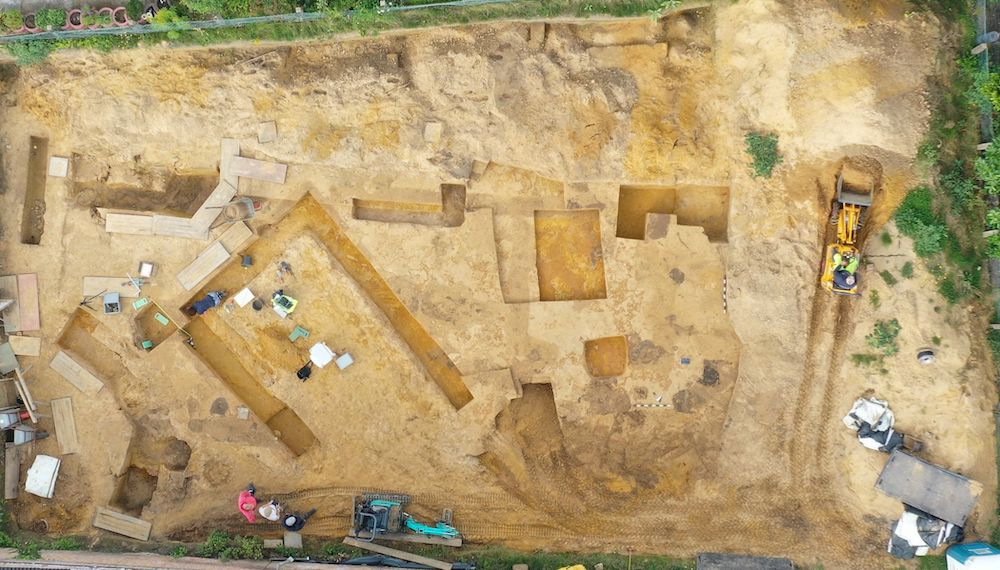
Archaeologists have unearthed the remains of two Roman temples and a sacrificial pit in Germany.
The building remnants, located at the site of a former Roman camp known as Haltern in northwestern Germany, are the first known instances of temples found at a Roman military site, according to a translated statement.
During excavations, archaeologists unearthed the clay frameworks of the rectangular buildings. The last time researchers explored the site was in 1928, but the findings were since reburied to help preserve the existing structures.
Related: Soar over ancient Rome's temples, brothels and baths in epic new 3D reconstruction
The twin temples were once part of a larger building complex that measured roughly 21,500 square feet (2,000 square meters). Archaeologists initially thought one of the buildings was used as a meeting house, or "schola," for military officials and later as a workshop, based on some of the tools found strewn about the site. They're currently not sure of the second building's purpose.

"[The constructions] were based on the typical large podium temples made of stone that could be found in numerous Roman cities at the time of Emperor Augustus," Bettina Tremmel, an archaeologist with the Regional Association of Westphalia-Lippe (LWL) in Germany, said in the statement. Augustus, the great-nephew and adopted heir of Julius Caesar, ruled as the empire's first emperor from 31 B.C. to A.D. 14.
Between the two structures, researchers found a shallow, circular sacrificial pit — a surprising find, considering "the construction of a grave within a settlement was forbidden under Roman law," according to the statement. No human remains have been found at the site thus far.
"In our current state of research, the two small temples and the niche building with the burning pit are a unique building group within a Roman camp," Michael Rind, director of archaeology at LWL, said in the statement. "Previous archaeologists have already puzzled over the function of these buildings."







